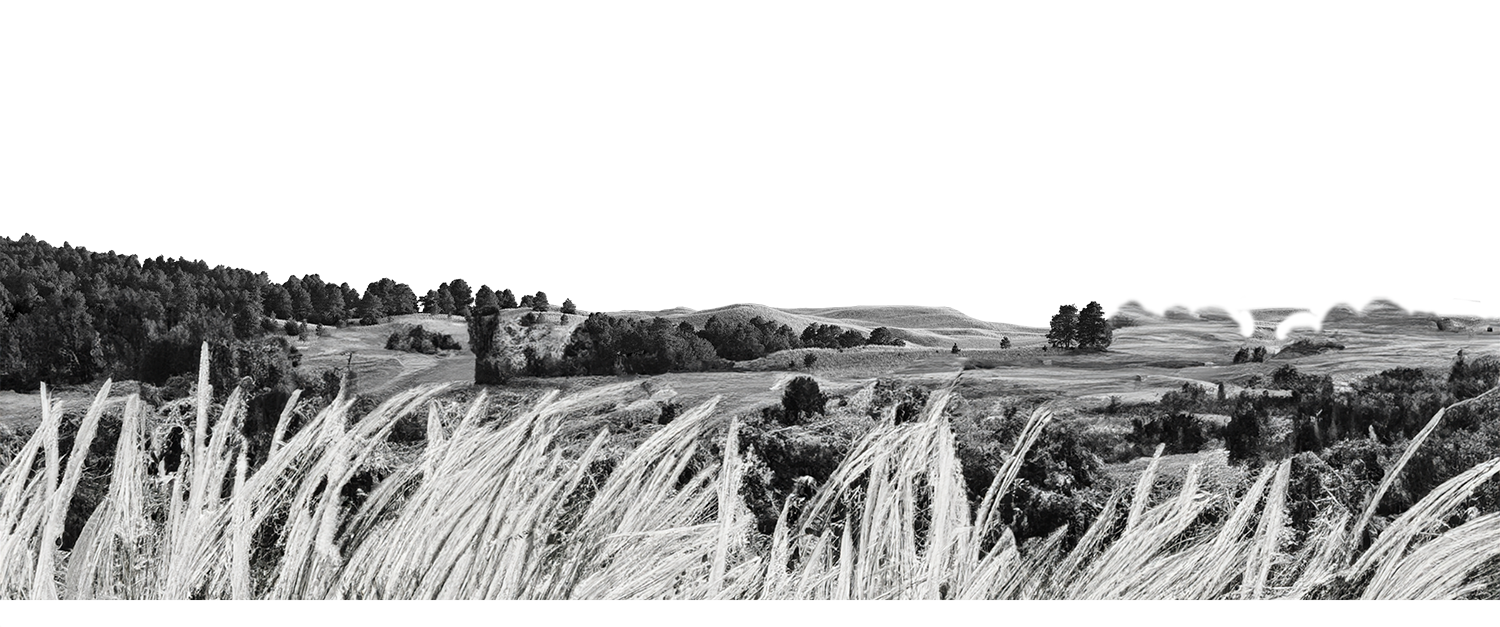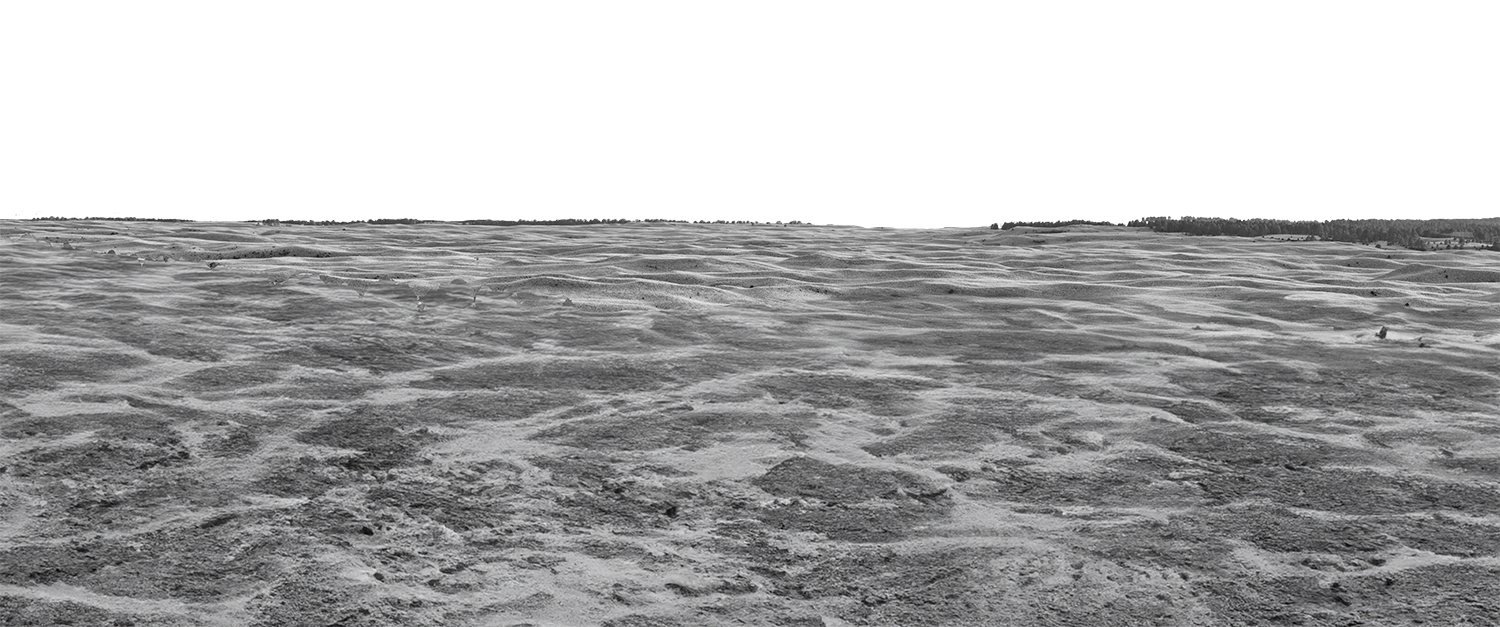Early career awards fuel solution-seeking research
Nebraska researchers are solving mysteries and engineering solutions for vexing problems with prestigious early career awards. Their work is helping to build next-generation electronics, making homes and computer models even smarter, removing “forever chemicals” from contaminated water and investigating a controversial new theory about Iceland.
In 2023, seven Nebraska faculty received five-year Faculty Early Career Development Program awards from the National Science Foundation that support outstanding pre-tenure faculty. Together, their awards total more than $4.1 million.
Advancing commutative algebra
A Nebraska mathematician is advancing her work in commutative algebra, an area of abstract algebra that’s key to solving real-world problems in robotics, statistics, physics and beyond.
Eloísa Grifo, assistant professor of mathematics, is the second Husker mathematician and the first woman in the Department of Mathematics to receive a CAREER award. She earned $425,000 to expand her work.
Grifo’s work focuses on points of irregularity, called singularities, in the geometric shapes described by a system of polynomial equations. Visually, singularities look like a sharp point, a corner or a crinkle.
Grifo is interested in singularities of complex shapes.
“For a 200-dimensional object, I can’t draw it, and you can’t see it, so whatever interesting information I want to extract from it is not something that I can visualize geometrically,” she said.
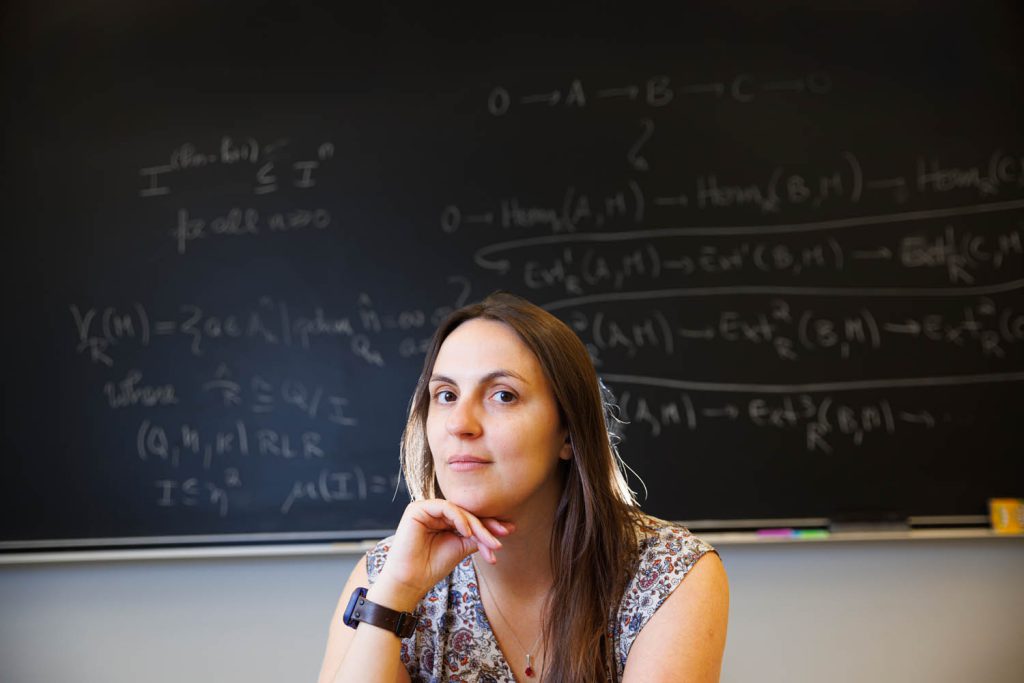
The solution is to convert the problem from one of geometry to one of algebra. To learn about a shape’s singularities, Grifo probes the algebraic properties of the corresponding equations.
A hallmark of Grifo’s research is importing tools from other mathematical fields to commutative algebra. She and her collaborators were first to apply a strategy from arithmetic geometry called p-derivations, which may be a mechanism for solving longstanding questions in commutative algebra.
Testing new theory of ‘Icelandia’
A radical new theory suggests Iceland is the tip of a previously unknown, sunken continent dubbed “Icelandia.” The controversial theory challenges long-held ideas about the North Atlantic’s geology and continental formation.
Irina Filina, assistant professor of earth and atmospheric sciences, is testing the theory with a nearly $750,000 CAREER grant.
The discovery of continental material in Iceland led to a new tectonic hypothesis that suggests supercontinent Pangaea didn’t fully break up along the mid-Atlantic. Instead, part of it stretched out, leaving Icelandia’s continental crust crossing the divide between Greenland and Scandinavia.
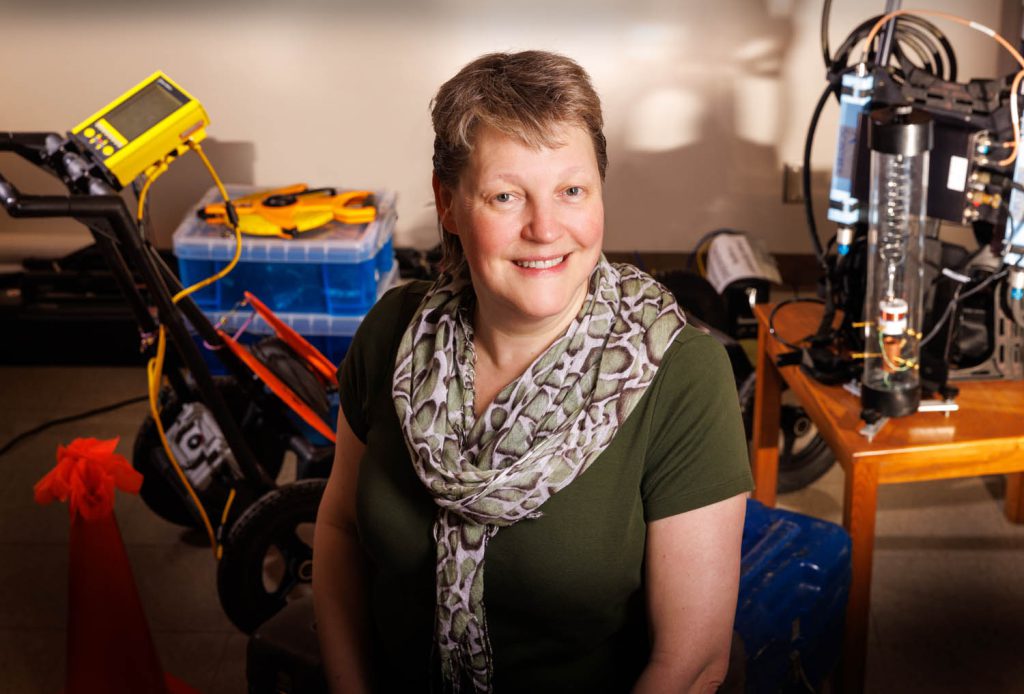
Filina is reviewing existing geophysical data to explore new interpretations about the nature of the crust underlying the Northern Atlantic.
“This analysis will transform our understanding of the Northern Atlantic and will elucidate the tectonic processes responsible for breaking continents and opening new oceans,” Filina said.
She’s building a new tectonic model of the Northern Atlantic that will develop a coherent geological story to explain all datasets and observations. It’s an approach she applied to the Gulf of Mexico, another complex tectonic region.
Along the way, she aims to build a robust geophysics program that could position Nebraska as a leader in educating students in the field.
Improving polymer coating production
A Nebraska engineer is using artificial intelligence to develop a better way to manufacture polymer coatings, essential components in electronics.
Polymers, especially those used in semiconductor technology, have stringent quality requirements. Scale-up, purity and production time present major manufacturing challenges.
Mona Bavarian, assistant professor of chemical and biomolecular engineering, received a nearly $580,000 CAREER grant to replace traditional batch manufacturing with a more precise flow chemistry process.
The switch will allow better control of polymer properties and structures, reducing defects and improving overall quality.

If something goes awry in batch manufacturing, the entire contents may be ruined. The flow process uses advanced control techniques and allows staff to monitor the quality of raw materials and stop the process if something goes wrong.
This approach will allow high-throughput manufacturing of specialty polymers with qualities unattainable by traditional manufacturing, Bavarian said.
It should also reduce manufacturing waste, making microelectronics eco-friendlier and more sustainable to produce.
“Specialty polymers require high-precision manufacturing,” Bavarian said. “The semiconductor industry has a high need for these materials, especially as electronic devices are becoming smaller and widely used in a variety of products.”
Her research should also apply to other specialty polymers.
Making smart homes even smarter
Smart homes can do many things, but they can’t yet locate missing sweaters or tell you’re low on milk.
Nebraska engineer Hongzhi Guo aims to make smart homes even smarter. With a nearly $500,000 CAREER award, he’s developing technology that creates a home’s digital twin, including detailed information about everyday items like clothes, books and pantry items.
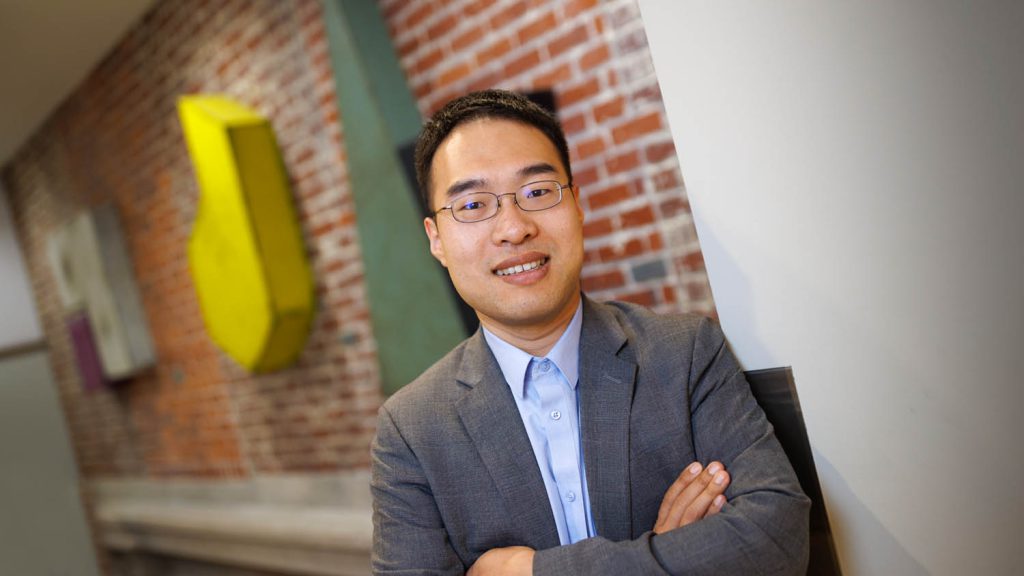
“The Internet of Things is a pretty mature technology in that we can connect sensors,” said Guo, assistant professor of computing. “But still, there is a big gap. If we want to build a virtual model for our life, then we need a technology to connect it with everything in the physical world.”
Guo seeks to expand near-field communication, or NFC, the short-range wireless technology that enables contactless pay and card-access building entry. Expanding NFC would allow new applications, including digital twinning and wearable tags embedded in clothes that transmit information.
He’s building hardware for NFC-linked devices and developing algorithms and software to enable long-range, secure communication in ultra-dense environments, like a crowded closet or a packed mail truck.
Orientation and sensing algorithms would, for example, show you where a tagged water bottle is, how much water it contains and whether it’s tipped over.
Harnessing heat in tiny devices
If you’ve experienced an overheating laptop, you know tiny electronic parts inside devices can suffer from excessive heat. The physics of near-field thermal radiation limits how small components can get.
Nebraska engineer Mohammad Ghashami is helping to propel next-generation nano-devices by advancing knowledge of energy transport in miniaturized components.
His research may pave the way to harnessing excess heat and turning it into an asset, such as generating electricity, extending battery life and improving device efficiency.
With a $630,000 CAREER award, Ghashami focuses on systems with multiple components, as opposed to the two-component setups that currently predominate research. Multi-body experiments more closely resemble the configuration of advanced electronic devices.
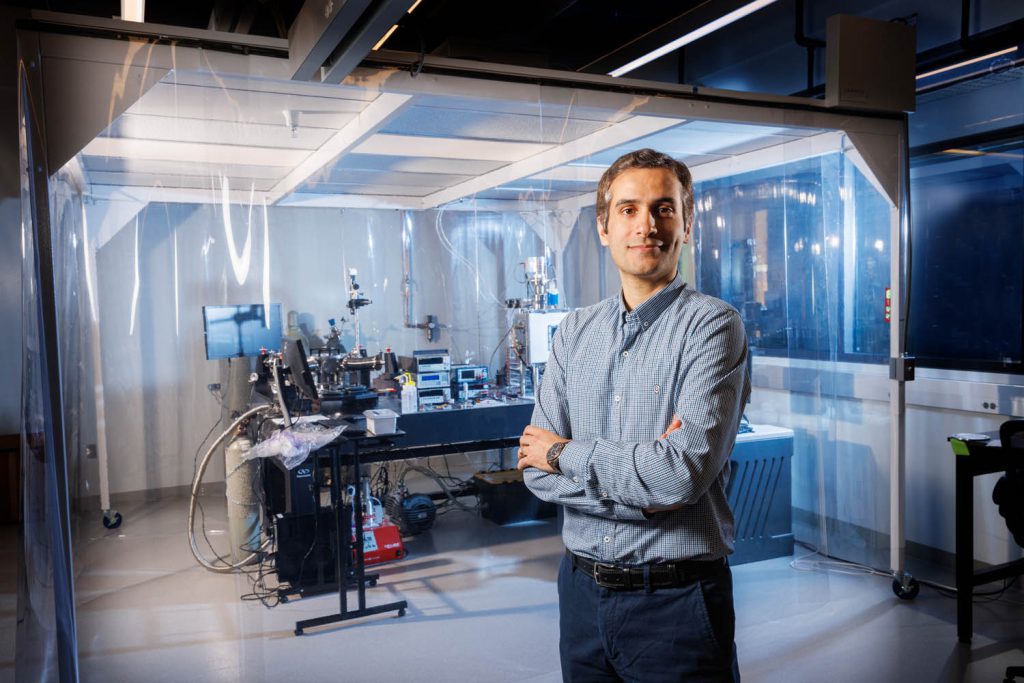
“As soon as I have more than two bodies, new physics shows up, and it changes the paradigm,” said Ghashami, assistant professor of mechanical and materials engineering.
His team is exploring nanoscale radiative transport from a theoretical perspective, using computer modeling and software simulations to determine what is likely to happen under certain conditions.
They’re also developing a first-of-its-kind experimental platform to overcome the challenges of nanoscale experimentation. Their innovative research marks one of the first attempts to experimentally verify the physics of radiative heat transfer in multi-body systems.
Removing ‘forever chemicals’ from water
Nebraska’s Nirupam Aich is developing a filtration system to remove “forever chemicals” from water, helping to reduce a significant environmental problem and threat to human health.
PFAS – per- and polyfluoroalkyl substances – are ubiquitous, commonly found in nonstick pans, electronics, plastic food packaging, firefighting foams and many hydrophobic coatings. They’re difficult to degrade due to strong carbon-fluorine bonds.
With a $500,000 CAREER award, Aich’s team uses 3D-printed nanomaterials to break these bonds and render PFAS nontoxic.
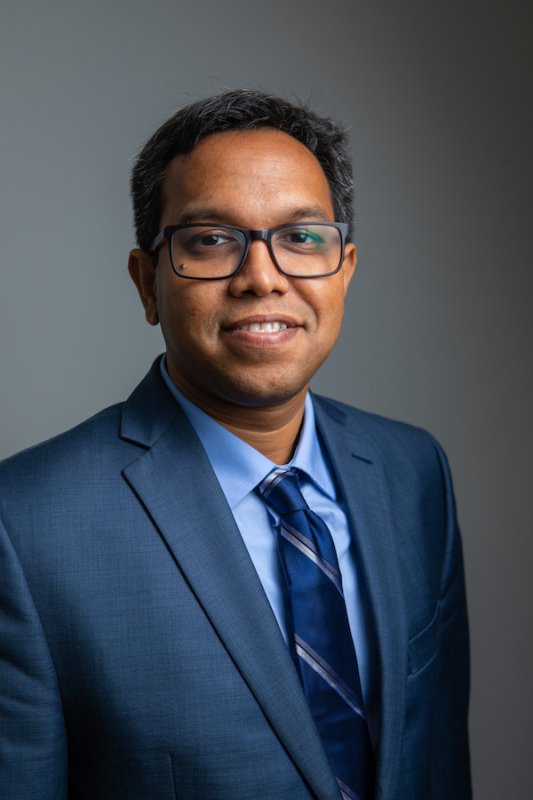
The challenge has been manufacturing nanomaterials for use in treating water, said Aich, associate professor of civil and environmental engineering. His team is also developing a safe and cost-effective nanomaterial-based water filtration system.
“We can help Nebraska in, first, understanding this emerging contaminant pollution, then fighting this pollution even before it happens,” Aich said. “Then, if we develop those technologies and a resilient infrastructure, that can help the world, too, because it’s a global problem.”
Aich’s research is receiving international attention. He’s participating in the Science History Institute’s Center for Oral History to document his perspectives, particularly as a Bangladeshi engineer.
Aich received the award in 2022 while at State University of New York at Buffalo.
Unwinding causes, solutions to bolt loosening
In 2011, one of America’s most advanced unmanned aerial vehicles crashed. In 2013, a train accident in Paris killed seven. And in 2016, a Union Pacific train derailed in Mosier, Oregon, spilling 42,000 gallons of crude oil.
Those are just three dramatic examples of how one of the most vexing and little understood phenomena of basic mechanics — the loosening of bolts over time — can create havoc.
Keegan Moore, assistant professor of mechanical and materials engineering, has a $727,000 CAREER grant to study how loosening happens and how it could be prevented.
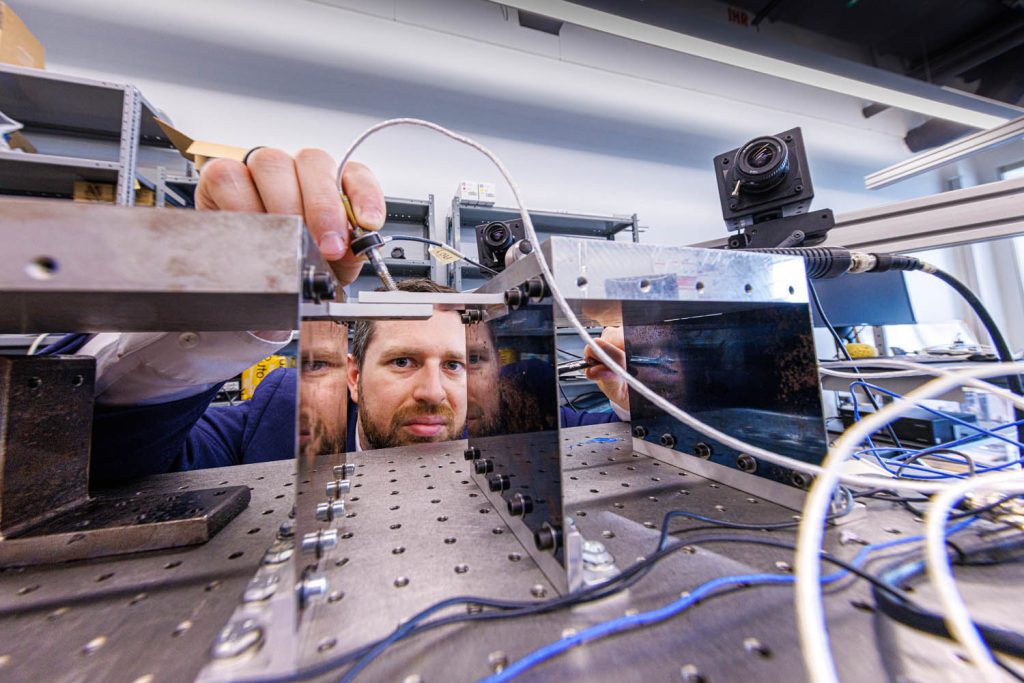
Moore is investigating rotational loosening caused by vibrations in structures. He measures interface contact conditions – the surfaces the bolt holds together – using high-speed digital cameras that capture thousands of frames per second. The strains measured around the bolt head or nut can be mapped to the contact conditions inside the interface around the bolt hole.
“This will hopefully give us a new window to what’s going on in the interface that we’ve never had before, and we’ll be able to measure how that changes dynamics as the bolt loosens and as the structure shakes,” Moore said.
The next step is to develop modeling frameworks to reproduce the dynamics of loosening and determine how a structure’s dynamics influence how quickly that occurs. Moore’s research could be used to predict maintenance needs for transportation infrastructure. Predictive modeling would be more efficient than monitoring individual bolts on a bridge to determine which ones have loosened over time, for example.
Understanding plant-microbe interactions to prevent crop loss
Bacterial plant pathogens are a major driver of devastating diseases in crops, which threaten global food security as the world’s population heads toward a projected 10 billion by 2050.
Clemencia Rojas, associate professor of plant pathology, is using a $900,000 CAREER grant to explore the complex interplay between microbes and plants. Though plants have sophisticated means of warding off disease – physically strengthening their cell walls and releasing antimicrobial proteins, for example – pathogens can circumvent these defenses.
“We are trying to understand what happens in the plant, but also how pathogens try to hijack the plant’s strategies,” Rojas said.

Rojas is using a multidisciplinary approach to pinpoint how different proteins behave during this process. She has used a variety of techniques – including live-cell imaging, proteomics technologies and biological, genetic and biochemical assays – to delve into the molecular and cellular aspects of the plant-microbe interaction. So far, she’s identified two proteins, AtNHR2A and AtNHR2B, as key players in the plant defense system and is working to uncover more details about them.
Basic research like Rojas’ will provide a foundation for developing effective strategies for combating crop loss.
Rojas is also launching an online microbiology course for students at Hispanic-Serving Institutions, which includes an in-person summer research experience in her lab. She’s also developing a robust partnership between UNL and the University of the Andes in Bogotá, Colombia, where Rojas received her undergraduate degree.
+ Additional content for Early career awards fuel solution-seeking research
News release: Husker mathematician draws from geometry to advance field of algebra
News release: Nebraska geophysicist studying new tectonic theory in North Atlantic
News release: Husker scientist developing more precise method to create polymer coatings
News release: Guo aims to develop smart tech for household objects
News release: Ghashami’s CAREER award setting the stage for tomorrow’s nanoelectronics
News release: Aich seeks innovative ways to clear ‘forever chemicals’ from water
News release: Husker engineer unwinding causes, solutions to bolt loosening





